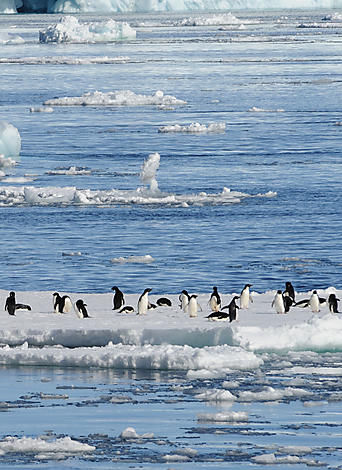Home | Antarctica | Ross Sea, East Antarctica & Subantarctic Islands
Quick Facts about Ross Sea, East Antarctica & Subantarctic Islands
Ross Sea is the southern extension of the Pacific Ocean. With the vast Ross Ice Shelf at its head, the sea is a generally shallow marine region approximately 370,000 square miles (960,000 square km) between Cape Adare in northern Victoria Land on the west and Cape Colbeck on Edward VII Peninsula on the east. In 2016, the world's largest marine protected area was established in the Ross Sea.
The Ross Sea is one of the least-iced and most-accessible of Antarctica’s fringe seas. It was first explored on January 5, 1841, by the HMS Erebus and HMS Terror, commanded by James Clark Ross on an unsuccessful attempt to reach the south magnetic pole.
The nutrient-rich seawater supports abundant planktonic life which in turn provides food for larger forms, including fish, seals, whales, and seabirds and shorebirds. Adélie and emperor penguins populate rookeries at a number of places around the Ross Sea.
The Subantarctic Islands to the south and east of New Zealand are comprised of six groups: the Bounty Islands, the Antipodes, the Snares, the Auckland Islands, Campbell Island and Macquarie Island. Flora and fauna are densely concentrated in these islands.
Top 5 Reasons to visit Ross Sea & Subantarctic Islands
-
Wildlife in the Ross Sea is among Antarctica's most abundant
-
It is home to the Ross Ice Shelf, the world's largest
-
The world's largest marine reserve is located here
-
The Ross Sea has fascinating stories on our most famous explorers
-
Mount Erebus, in the Ross Sea, is the second-highest volcano in Antarctica and the southernmost active volcano on Earth

















































